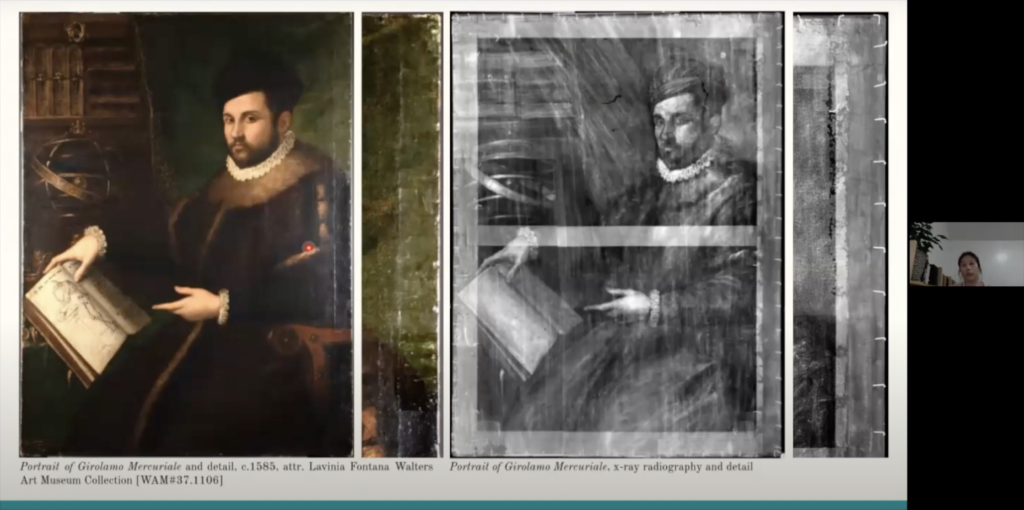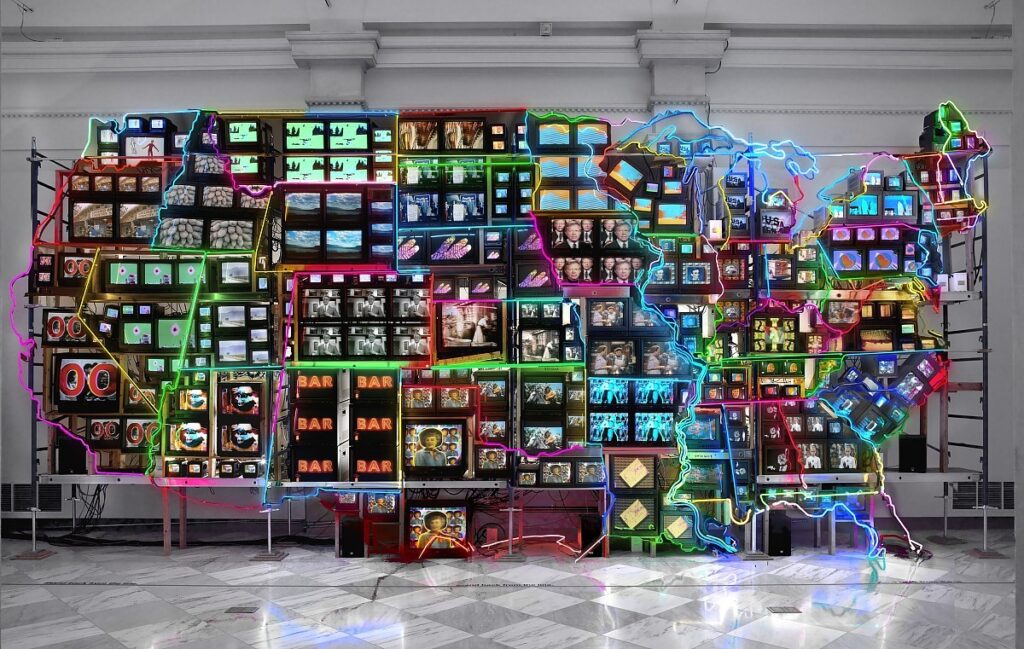
Emerging Professionals Talks (March 3, 2022)
Presented by Williston Fund Recipient: Hae Min Park, Andrew W. Mellon Fellow in Paintings Conservation at the Walters Art Museum
In her talk, Hae Min described the technical study and treatment of one of her several fellowship projects. The Portrait of Girolamo Mercuriale (https://art.thewalters.org/detail/19054//) was painted circa 1585 by the Bolognese painter Lavinia Fontana. Prior to Henry Walters’ acquisition of the picture in 1902, it had undergone multiple structural interventions. These interventions include alterations to the dimensions of the original canvas and the addition of a glue-paste lining.
Following discussions with the curator, Hae Min removed all layers of old coatings. Among the cleaning methods used were a solvent gel, as well as a solvent mixture of isopropanol and ShellSol. Cleaning allowed for increased legibility of some of the finer details of the painting and raised some questions regarding the sitter. Girolamo Mercuriale was a renowned physician, and it is thought that he was close to the artist professionally; it is known that she painted four portraits of him in the years surrounding 1585. At that time, Girolamo would have been about 50 years old. Considering the relatively youthful appearance of the sitter, the current identification has come under question. Removing the discolored varnishes and overpaints also revealed more of a heavily abraded inscription along the edge of the painting, which stated that the sitter was 35 years old. Hae Min hopes that further research as well as technical imaging will shed more light on the identity of the sitter.
It was found that the green paint used to create the drapery in the background contained islands of darkening. Fiber Optic Reflectance Spectroscopy (FORS) was used as a preliminary means of investigating what is suspected to be a discolored copper resinate. FORS was also used to tentatively distinguish the binder used in the paint layers (oil) from that used in the ground (glue). Hae Min hopes to conduct further instrumental analysis to strengthen some of her initial hypotheses.

Meeting summary by: Derek Lintala
National Endowment for the Humanities (NEH) Fellow at the Conservation Center of the Institute of Fine Arts, New York University and Painting Conservation Graduate Intern at the National Gallery of Art, Washington, D.C.
Attendance: approximately 60-70 participants
Venue: virtual